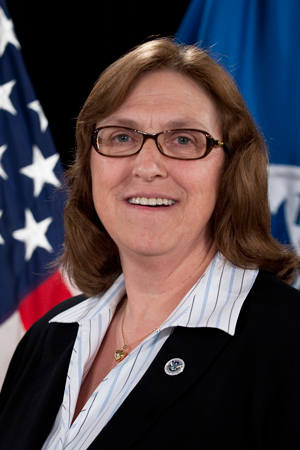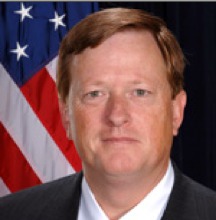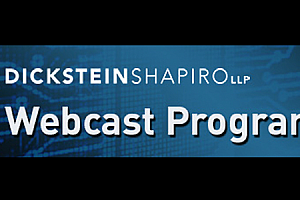Part I: Implementing Agile at USCIS with Josh Seckel, Chief, ATD, USCIS
We’ve also got to create a culture of partnership. We recognize companies are in business to make money, but we’ve got to create alignment towards a bigger purpose – like changing the way federal IT works.
Sara Kindsfater-Yerkes, Chair of the GTSC Business Development Exchange, was able to sit down with Josh Seckel, Chief of the Applied Technology Division (ATD) at USCIS. In this two-part interview, they discuss the agile transformation at U.S. Citizenship & Immigration Services at the U.S. Department of Homeland Security. Among ATD’s chief responsibilities are driving the adoption of agile across the USCIS enterprise, brought about in part by providing agile coaching services – experts across the technical, process and organizational change domains who help clients shift their culture and mindset to lean/agile thinking. This is a sea change in Federal IT – moving away from the lengthy, and staged waterfall methods to continuous activities for developing software. By doing them continuously quality improves because testing starts day one, visibility improves through collaboration and increased visibility, and risk is reduced through continuous feedback and prioritization of work.
GTSC: So Josh, we’ve known each other for a while now, but I’d like to give people insight into your background. Where should we start?
Josh: Where to start? So the dinosaurs roamed. No, just kidding! The short version is that after getting my Computer Science degree I went to work for IBM and got to participate in all aspects of the software development process – but come 2001 I was still programming in Cobol. I decided to go back to school and get my MBA which obviously taught be a great deal about the business-side of organizations. I get accounting, P&L, all that good stuff. After that, I came to DC and worked for a few federal contractors, which gave me the experience to support programs with the United States Marine Corps, the Joint Strike Fighter, the Domestic Nuclear Detection Office where I was part of a team introducing agile concepts and then to the Homeland Security Information Network coaching on agile. Then I came to USCIS, as a government employee. I’ve been around DHS since it’s inception and working with agile concepts like rapid application development before agile became mainstream.
GTSC: What has your role been at USCIS?
Josh: I came to USCIS to help CIO Mark Schwartz advise the organization on the adoption of agile and to be a federal coaching leading contractor coaches.
GTSC: What made the job as a “Govie” appealing to you?
Josh: The ability to say “yes” enticed me. I’d worked as a contractor and was told “great idea, but no” and wanted to listen to great ideas from both government and industry and be able to say “yes – let’s try that.” I also wanted the opportunity to really execute on this idea of agile adoption and improving federal IT more fully.
GTSC: You’ve been very mission focused from that perspective. Very cool. Your response made me think, and this a bit tangential, about the fed/contractor relationship. How do we change and improve that dynamic?
Josh: Good question. The government needs to do its part – we need to improve federal employee education and what I mean by that is putting someone in charge of overseeing an agile program with skills and experience in agile. We hire contractors because they have specific expertise that we don’t, but then we get unfriendly because they know things we don’t. The flipside of that is the perceptions that contractors think the government employees don’t know anything and that too causes tension.
GTSC: It’s definitely a vicious cycle that we’ve got to collectively break. There’s nothing more gratifying as a consultant then to work with a customer who needs your expertise and allows you to work with them to solve real problems.
Josh: Yes, so we’ve also got to create a culture of partnership. We recognize companies are in business to make money, but we’ve got to create alignment towards a bigger purpose – like changing the way federal IT works.
GTSC: You’ve been spearheading agile coaching internally at USCIS, what’s the value agile coaches provide? How are they different from Scrum Masters?
Josh: Well, I would start by saying that they don’t necessarily have to be different then scrum masters; really good, experienced scrum masters can be coaches. Agile coaches provide knowledge on how to do this new thing through their experiences not a 2-day course. Good coaches offer a broader perspective and are a good mirror – they are a reflection of the team back to itself, an objective 3rd party reflection. And they not only coach the development team, they coach management too.
STAY TUNED to next week when Sara and Josh discuss being a good “mirror,” coaches versus scrum masters, and how agile is driving culture change in the government.
 Sara Kindsfater-Yerkes, leader of GTSC’s DHS Business Development Exchange and member since 2012, is an Organizational Change Strategist with expertise in guiding large-scale transformations, Sara is passionate about helping individuals and teams to become high performing and creating cultures in which all can thrive. She currently supports Josh and USCIS in the cultural adoption of lean/agile practices.
Sara Kindsfater-Yerkes, leader of GTSC’s DHS Business Development Exchange and member since 2012, is an Organizational Change Strategist with expertise in guiding large-scale transformations, Sara is passionate about helping individuals and teams to become high performing and creating cultures in which all can thrive. She currently supports Josh and USCIS in the cultural adoption of lean/agile practices.





 Brigadier General Bob Ranck (ret.) is Vice President of Integrated Systems Solutions (ISS), a Service-Disabled, Veteran-Owned Small Business (SDVOSB) possessing a Top Secret Facility clearance and ISO 9001:2008 certification. General Ranck served as Director, Warfighter Systems Integration, Office of Information Dominance and Chief Information Officer, Office of the Secretary of the Air Force, the Pentagon, Washington, D.C.
Brigadier General Bob Ranck (ret.) is Vice President of Integrated Systems Solutions (ISS), a Service-Disabled, Veteran-Owned Small Business (SDVOSB) possessing a Top Secret Facility clearance and ISO 9001:2008 certification. General Ranck served as Director, Warfighter Systems Integration, Office of Information Dominance and Chief Information Officer, Office of the Secretary of the Air Force, the Pentagon, Washington, D.C.
 Prior to this position, Mr. McCormack served in a variety of positions at DHS. From 2005 to 2012, he served as the CIO for the U.S. Immigration and Customs Enforcement. He served at Customs and Border Protection as Acting Director of Infrastructure Services Division from 2004 to 2005, Director of Architecture and Engineering from 2002 to 2003, and Director of Systems Engineering from 1999 to 2002. Before joining the federal government, he served at various private sector companies including MCI and Ford Aerospace. He received an M.B.A. from the Smith School of Business at the University of Maryland.
Prior to this position, Mr. McCormack served in a variety of positions at DHS. From 2005 to 2012, he served as the CIO for the U.S. Immigration and Customs Enforcement. He served at Customs and Border Protection as Acting Director of Infrastructure Services Division from 2004 to 2005, Director of Architecture and Engineering from 2002 to 2003, and Director of Systems Engineering from 1999 to 2002. Before joining the federal government, he served at various private sector companies including MCI and Ford Aerospace. He received an M.B.A. from the Smith School of Business at the University of Maryland.

